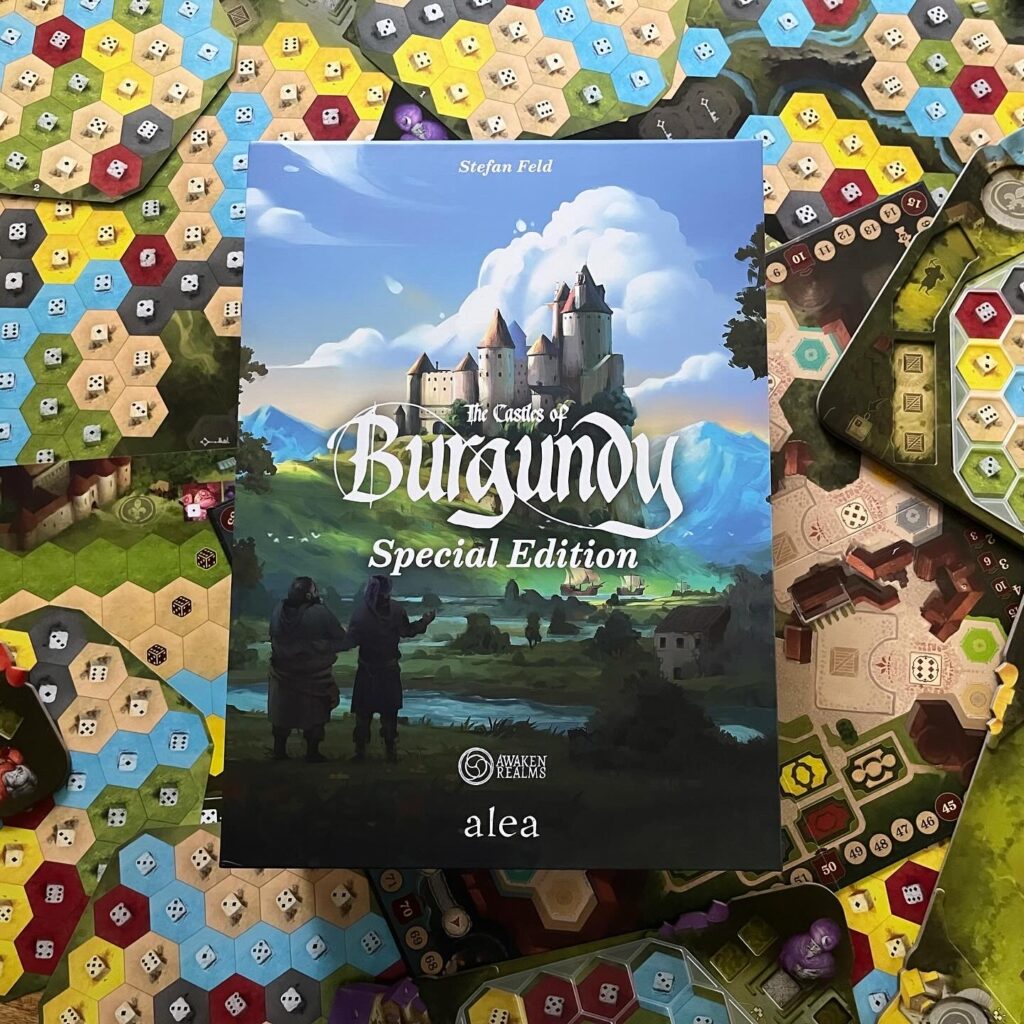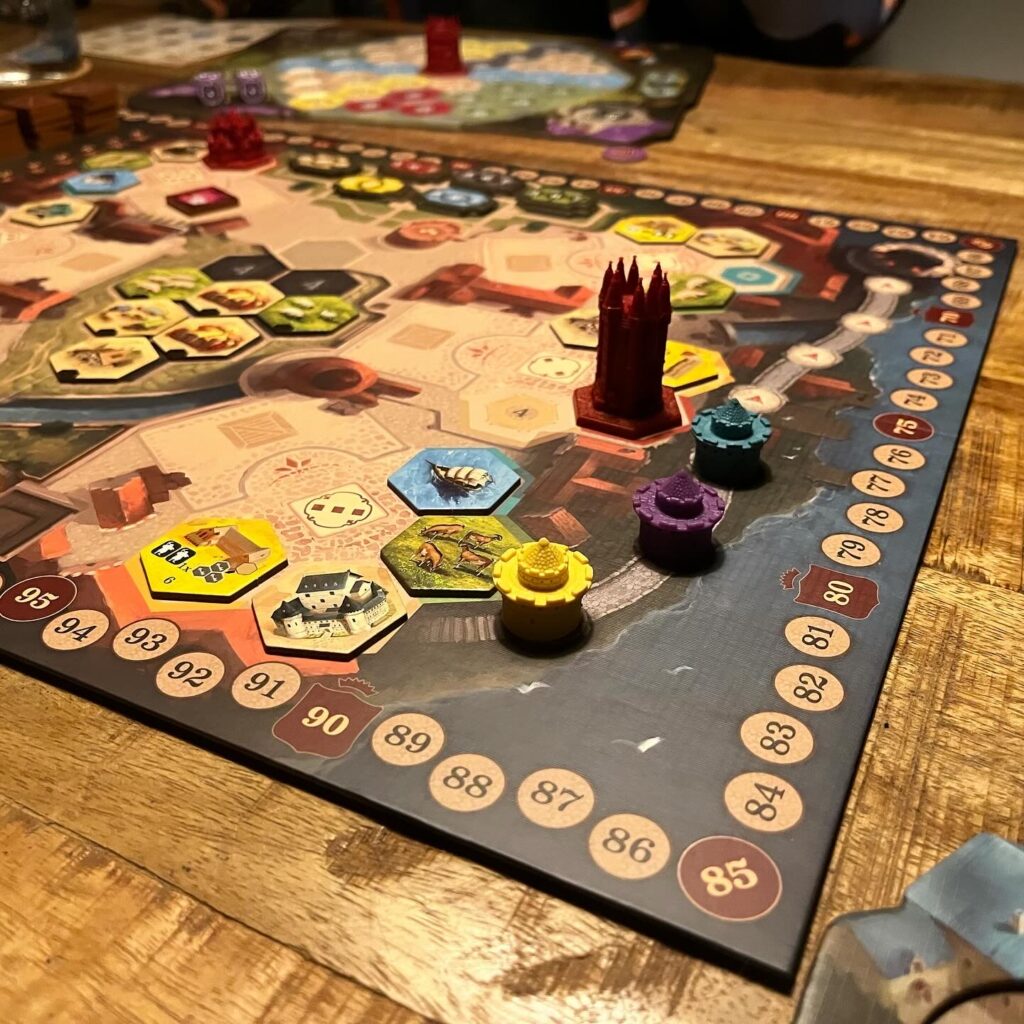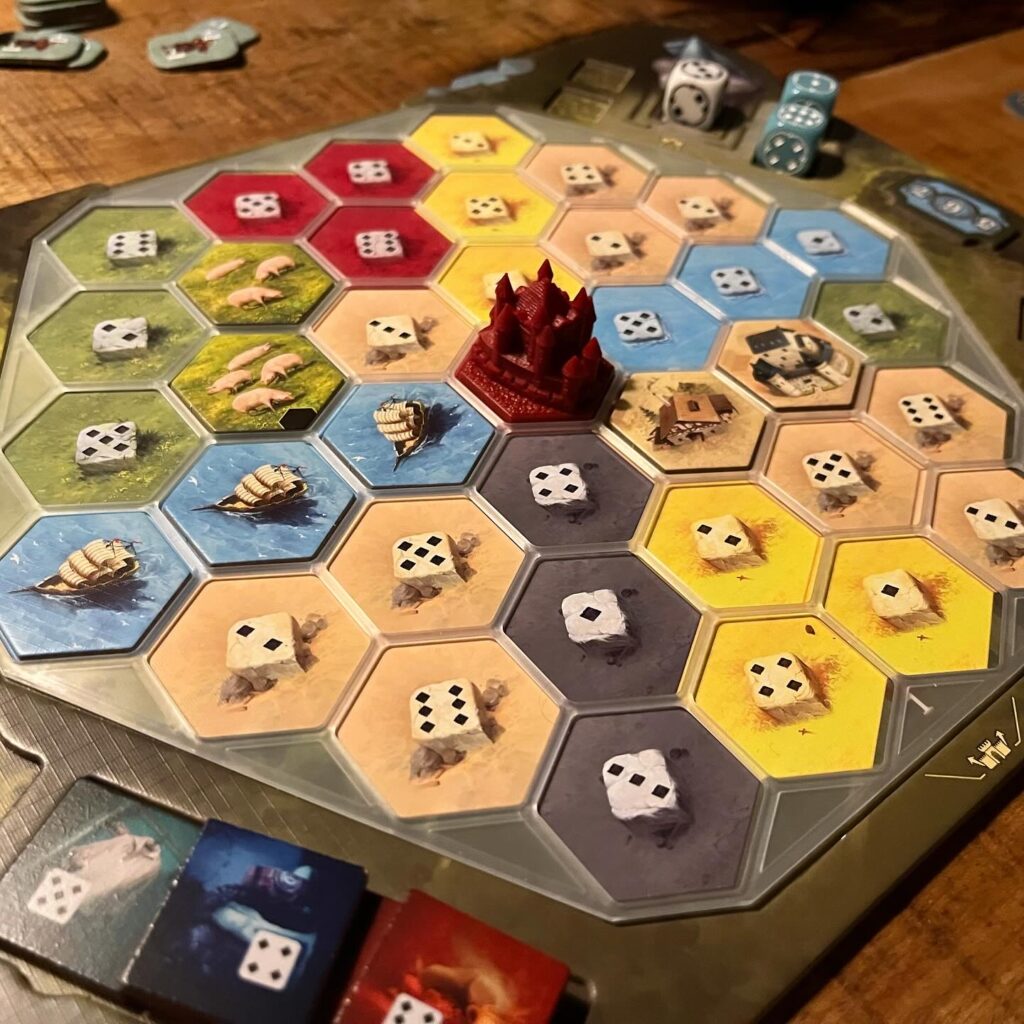Grab a big glass of delicious wine, some good food and you’re ready to live and play Burgundy-style for once. Will you know how to set up the best principality in the (now) timeless classic The Castles of Burgundy? Not just any The Castles of Burgundy, but a lavish Special Edition that many a Burgundian will envy.
Background
Burgundy living means enjoying life exuberantly in the Netherlands. A snack and a drink cannot be missing while enjoying life. The term Burgundian is derived from the Duchy of Burgundy, which, especially in the time of Philip the Good, had a great influence on Brabant and Holland as parts of the duchy. The people of Brabant in particular are still known as very Burgundian.
Nowadays, we know Burgundy mainly for its wine, the Côte-d’Or, Dijon (mustard) and of course good Burgundian dining in a nice bistro. However, Burgundy is also known for its rich history, especially from the Middle Ages and the many impressive chateaus and castles: the castles of Burgundy.

Like this northeastern part of France, the board game inspired by these castles now also has a rich history. The Castles of Burgundy is one of the many classics from Alea (a division/imprint of Ravensburger). It has been reprinted many times and has several expansions, but the reprints were always modest games. A normal box, simple but fine cardboard parts and often wooden dice. It was time to honor this classic, which can still compete among the modern board game violence, for once with a lavish edition for the Burgundian player.
Goal and setup
The Castles of Burgundy is a board game for 2-4 players, in which each player develops their own principality and corresponding piece of land in Burgundy. The game is played in 5 stages consisting of 5 rounds each, during which players roll dice to choose actions that they will use to collect and place tiles (including castles, buildings, monasteries and spaces with animals) to gain victory points. Player with the most points at the end of the final stage wins.
Depending on the expansions chosen, the setup differs. Each player receives a player board and all its components including a space that this player places in his player board and two dice. They are given some goods in advance and may also place an imposing castle on the board as their starting location.


In the center of the table, players place the central board where they will collect their tiles and goods and all tiles are prepared. The game consists of several tiles. There are a lot of tiles. Fortunately, the game includes some handy draw bags for many of these tiles, making sorting simple and setting up the game easy. By the way, this also goes for the other parts because of the convenient deployment of the game.
Gameplay
As I described, the game is played over 5 stages and each stage consists of 5 rounds. During each round, each player gets a turn and turn basically consists of 2 actions. At the beginning of a stage, the central game board is filled with new tiles at the designated spots. Each stage, 5 goods are also placed on the goods track.
Players use their dice to perform actions. At the beginning of a round, players roll their dice. The starting player also rolls a white die, indicating where on the central game board a good from the goods track is placed. Thus, when the goods track is empty, at the end of a round, it is time for a new stage.
During their turn, players thus use their two dice to perform actions. The value rolled corresponds to a location on the central game board, a location their field or of a goods tile and thus corresponds to an associated action. Players can adjust the value of a throw by deploying a worker.
With their actions, players can select tiles from the central board, place selected tiles in the appropriate locations on their player board, sell goods or hire workers. All tiles have a special property that is activated or used when players place that tile. With castles players get an extra action, with buildings players activate a bonus right away, with ships players get goods and advance on the track that indicates the order of players, mines provide coins, monasteries provide ongoing bonuses and points at the end of the game, and animals provide points during the game. Players thus try to make clever combos by performing correct actions and placing tiles correctly.


Players can use coins during their turn to buy so-called black tiles. This is an extra supply of random tiles that is stocked from a separate draw bag. The various expansions bring additional possibilities and rules.
Verdict
The Castles of Burgundy is a deeply strategic game with many choices, dilemmas and and nuances, but with simple rules, making this game extremely interesting and challenging for all different kinds of players. Burgundy is a great classic that is still current, refreshing, innovative and intuitive to play. Game play is extremely dynamic and players can achieve victory with different strategies, making the game very replayable.
This special edition is a collaboration between Alea and Awaken Realms. The latter publisher you may know from Lords of Hellas, Nemesis and many other complex games with a lot of luxury components and especially a lot of miniatures. The Castles of Burgundy comes to your home in a big box and contains a lot of luxury parts. Thick cardboard tiles, plastic castles, miniatures to keep track of the scoring, quality draw bags to keep the tiles in and pull them out during the game, trays to keep parts in, tiered player groups so parts don’t move during the game, nice dice and so on. In addition, this edition includes several expansions for a lot of parts and game fun. It’s lavish, but that’s what this game deserves as well as the fan who may have been waiting years for the ultimate edition of The Castles of Burgundy.



